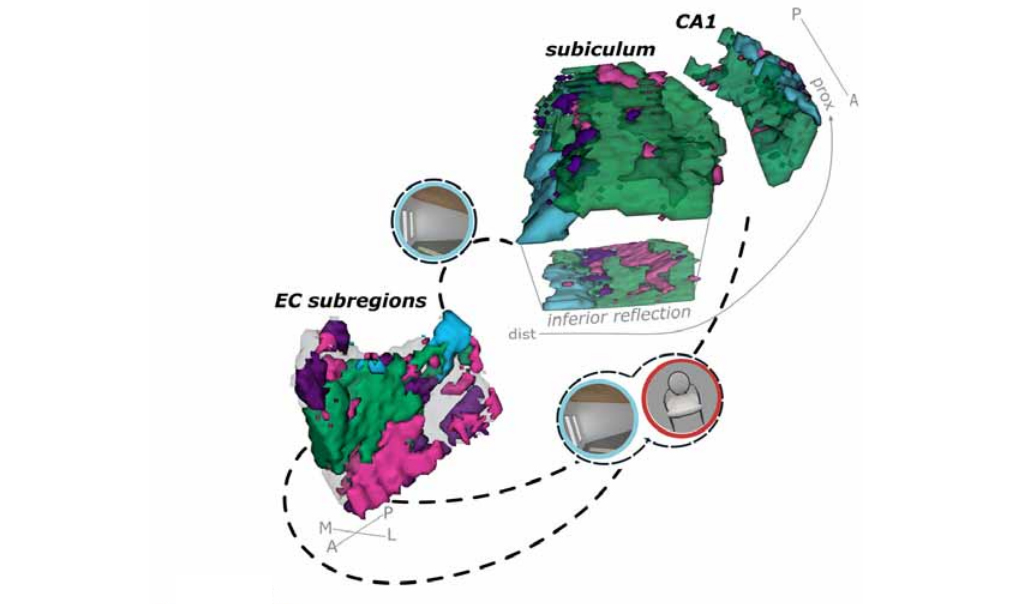- Research News
Human Brain Project researchers uncover detailed routes that visual information travels in our brains
07 November 2022
A recent study by researchers of the Human Brain Project (HBP) provides new insights into the fundamental role of a specific circuitry of the brain in cognitive functions such as episodic memory.
Subregions of the hippocampus and the entorhinal cortex form a functional circuitry – in other words, a group of brain regions that work together and exchange information among each other – that has an important role in processing visual scene and object information.
In the study recently published in the journal eLife, the team of scientists from the German Center for Neurodegenerative Diseases, Leibniz Institute for Neurobiology and Otto-von-Guericke University Magdeburg set out to learn more about how this circuitry, called entorhinal-hippocampal, is organised to integrate information. They have found extremely detailed functional routes within these regions.
It is known that scene and object information reach this circuitry from separate cortical ways, or pathways of information. Some studies with rodents show that these streams are still separated in the entorhinal-hippocampal circuitry, but others suggest the information is not so strictly separated. The HBP researchers wanted to get a more comprehensive insight of how this works in humans.

To this end, they used functional magnetic resonance imaging (fMRI) with a very high resolution to study functional connectivity and information processing. Step-by-step, they walked through the complex circuitry, looking at how the information travels between cortical areas and areas within the entorhinal cortex, and how information is communicated further within areas of the hippocampus.
They found that two functional routes characterize this circuitry: one specific scene processing route, and another functional route that shows no preference for scene or object information.
This basic functional architecture underlies memory and related cognitive functions.
“Our data show that the regions within the circuitry are organised in a very specific way that we can only see with very high-resolution images,” says Xenia Grande (German Center for Neurodegenerative Diseases Magdeburg), first author of the paper. “We saw special areas within these small regions that belong to the scene processing route. Other areas within the regions of the circuitry belong to a different route that is consistent with scene-object convergence.”
Reference:
Xenia Grande, Magdalena M Sauvage, Andreas Becke, Emrah Düzel, David Berron (2022) Transversal functional connectivity and scene-specific processing in the human entorhinal-hippocampal circuitry eLife 11:e76479
https://doi.org/10.7554/eLife.76479



